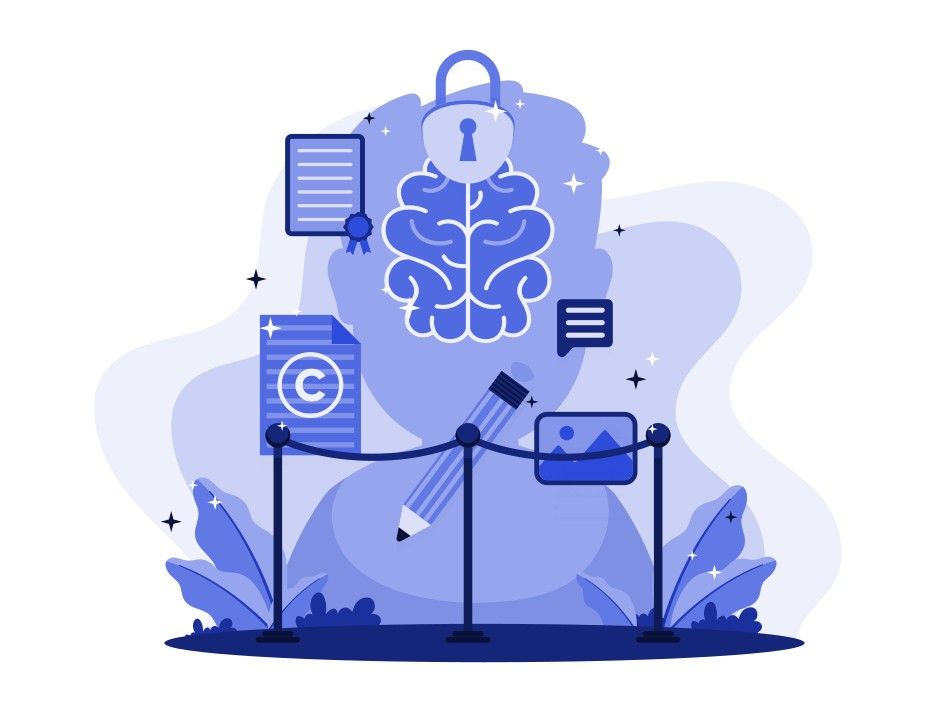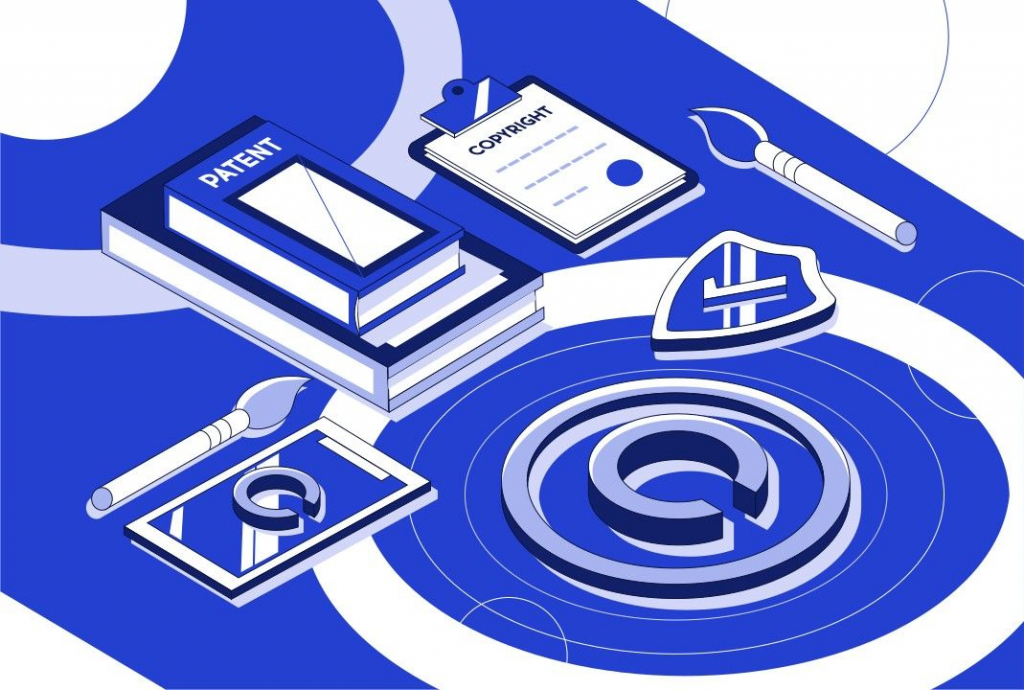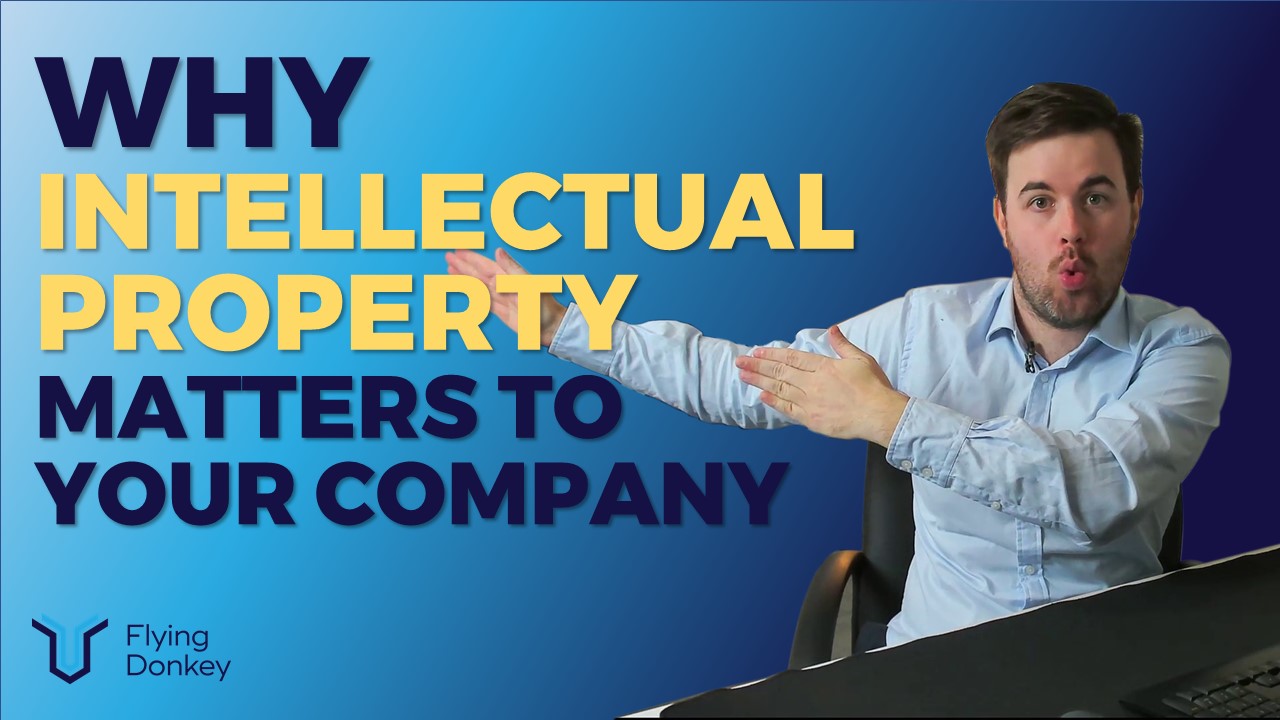One of the subjects that has come up during many of our blogs is intellectual property(IP). Many people don’t give this subject much thought but it can add tremendous value to your business if you are looking for investors, partnerships, or selling your organisation. We’ll look at some of the aspects of Intellectual Property including:
- What is intellectual property?
- What is the difference between owning software and licensing it?
- How does intellectual property impact the value of a business?
- What types of intellectual property are there?
- How do I protect my intellectual property?
Before I begin, I should disclose that none of the information provided should be considered legal advice. I am not a lawyer and only lawyers can provide legal advice.
What is IP?
According to the Australian Trade and Investment Commission IP is “intangible assets that relate to doing business including patents, trade marks, designs, and secret processes and formulae.” Each type of IP is used for different purposes, but the intent of intellectual property is to protect the assets that make your company unique. The organisation responsible for Australian IP regulation is IP Australia.

What is the difference between owning software and licensing it?
Owning software means the software is yours to do as you wish, while licensing means you are using the software with another’s permission and stipulations. When you pay a software vendor to add features to their software, you are paying for the development costs but the software vendor typically owns the IP and allows other clients to license it as well. When you build a custom software solution with Flying Donkey IT, you own the software and IP Rights. That means you can do whatever you want with it.
How does IP impact the value of a business?
Intellectual Property impacts the value of a business in a variety of ways. It reduces expenses by providing more efficient solutions. Custom software builds only what you need, while a typical software vendor develops software meant to apply to most businesses. You can save a ton of time by building custom software because you won’t be figuring out which features you need and which you don’t.
IP also provides potential streams of revenue through licensing or people infringing upon your IP. If you look at the Apple vs. Samsung IP cases that ultimately ended in a settlement, some courts had ruled for over half a billion dollars before they came to an agreement with undisclosed terms.
IP is also a driver of differentiation based on UI/UX, quality of product, efficiency, and many more things that impact customer behavior. To give you an idea how important IP is, intangible assets (IP, knowledge base, brand recognition, etc.) make up over 80% of the S&P 500 market value. That means less than 20% of the value attributed to the largest companies in the world is derived from physical assets like land, buildings, and inventory.
What Types of IP are there?
There are a multitude of types of intellectual property. Some of the most common types of Intellectual Property are:
- Copyright
- Patents
- Trademarks
- Domain Name
- Design Protection
How does IP impact the value of a business?
Intellectual Property impacts the value of a business in a variety of ways. It reduces expenses by providing more efficient solutions. Custom software builds only what you need, while a typical software vendor develops software meant to apply to most businesses. You can save a ton of time by building custom software because you won’t be figuring out which features you need and which you don’t.
IP also provides potential streams of revenue through licensing or people infringing upon your IP. If you look at the Apple vs. Samsung IP cases that ultimately ended in a settlement, some courts had ruled for over half a billion dollars before they came to an agreement with undisclosed terms.
IP is also a driver of differentiation based on UI/UX, quality of product, efficiency, and many more things that impact customer behavior. To give you an idea how important IP is, intangible assets (IP, knowledge base, brand recognition, etc.) make up over 80% of the S&P 500 market value. That means less than 20% of the value attributed to the largest companies in the world is derived from physical assets like land, buildings, and inventory.
What Types of IP are there?
There are a multitude of types of intellectual property. Some of the most common types of Intellectual Property are:
- Copyright
- Patents
- Trademarks
- Domain Name
- Design Protection

All but the domain name and copyright are administered by IP Australia, while the others have separate entities that govern them. Which I’ll discuss those individually.
Copyright
Copyright is by far the most common type of intellectual property and the one that most applies to software and technology. Copyright protects creative endeavors. It is granted the second the work is created and lasts until 50 years after their death. In Australia, copyright is only dealt with in courts of law. You do not register your work. You simply put the “© INSERT COPYRIGHT OWNER 2020.” This covers music, photography, literature, software, and more.
The creator is typically the owner unless they are doing it while employed by a company, then the company is the owner. At Flying Donkey, we focus on developing custom software and any solution (minus intellectual property owned by other people/organisations) is your intellectual property.
Copyright ownership allows you to control how the creative work is released, licensed, or sold. Anyone who uses the work is infringing upon copyright law and is subject to fines of $117,000 AUD for individuals or $585,000 for corporations. In addition, criminal charges can be made with a sentences ranging anywhere up to 5 years. To learn more about copyright, go to the Australian Copyright Council’s website.
Patents
Patents are the second most common type of intellectual property that applies to software. Patents protect inventions. Almost all publicly held companies hold patents. There are between 20 and 30 thousand patent applications filed in Australia each year and over 3 million globally.
According to the 2018 IP Report 2018 Patents around 25% of patents are granted to Computing, electronics, and communications companies. These companies tend to be creating products that will improve the effectiveness or pleasure of major groups of people. For instance, the Tesla Powerpacks that Hornsdale had installed have 157 US patents associated with them and helped fix the rolling blackouts that were occurring.
The process of applying for a patent is best performed by a qualified intellectual property lawyer because failure to document the invention correctly can result in rejection of the application or a failure to protect the truly unique part of the the invention.

There are two types of patents, standard and invention patents. The difference between a standard and innovation patent is the innovation patent has lower approval standards, lower fees, a shorter duration, and does not require examination unless patent protection is needed. The innovation patents are being phased out because they did not meet the objective of increasing Australian innovation. Standard patents are good for up to 20 years (25 for pharmaceuticals), while the innovation patents are only valid for 8 years.
For IP Australia to certify a standard patent, the patent must be:
- be a new idea or technology that is not currently in existence
- be patentable (some things are not patentable, like humans)
- Be inventive beyond the obvious natural evolution of a previous invention
- Meet a useful purpose that is specific, credible, and substantial
If your patent needs to be protected in multiple countries, you can file under the Patent Cooperation Treaty (PCT) which allows applicants to file in one country, but get protection in all countries who have signed the treaty. There are currently 153 countries that are members of this agreement. Find the full list here.
To learn more about Australian patents check out IP Australia’s Patent page.
Trademarks
A trademark is an identifying aspect of your brand. It can be a logo, slogan, or anything that is used to specifically help customers identify your brand in advertising.
According to the IP Report 2019 Trademarks, almost one in three trademarks are in Class 9 Technological and electrical apparatus or Class 42 Scientific and Technological Services. If you have partnerships with companies, you may display their logos on your site or marketing materials. This requires following their brand guidelines. If you use their intellectual property in a manner outside of the intended use they could end your partnership, send a cease and desist order, of file civil charges. Make sure you honor their instructions.
When registering a trademark, it is important to understand the difference between a trademark, business/company name, domain name, and design protection. A trademark does not register your business/company name with the ASIC, secure your domain name with the .au Domain Registration, or protect unique design features such as a new shape of a chair. It only protects the branding aspects of your organisation from being used without your explicit permission.
When applying for a trademark you can either do it though the Trademark Assist for Australian trademarks or through WIPO’s Madrid System for organisations which want to protect their brand across multiple jurisdictions or globally.
Trademarks are limited to the services you provide. There are currently 45 classes of goods and services and each class you want to trademark has a fee associated with it. Use the Government’s Trade Marks Classification search to establish which classes apply to your organisation. For more information on how to apply for a trademark go to IP Australia’s How to Apply for a Trademark page.
Domain Name
Domain names will be used in most digital assets. A domain name is your web address. Whether it is your own domain or an integration with another company, you will have domain names associated with the application. Each of these are owned by the domain owner. Most companies will typically have a couple different domains (or subdomains) to assist different stakeholders in what they need to accomplish. For instance, our domain name is flyingdonkey.com.au.

For a .au account, you’ll need to go to an approved domain registrar and purchase the domain. Find the Approved Registrars here. Things to consider while buying your domain include:
- Length of domain name
- Ease of remembering domain name
- Whether you want variations of the domain name for instance .net, .com, .org, etc.
- Whether you want different country codes.
Design Protection
Design Protection will only come up if you have physical assets you create. Design Rights are protections for the visual aspects of a new physical product. There are 7500 design right applications in Australia each year, but it really doesn’t apply to most technology as it doesn’t focus on the functionality, what goes on in the background, and graphic design. I guess maybe if you create a completely new color and shape of a computer it might matter, but it would have to be distinct. If you want to learn more about Design Rights, go to IP Australia’s Design Rights page.
At Flying Donkey, we focus on creating digital assets that are primarily in the cloud so we don’t expect that this would ever be a concern with interactions between clients.
How do I protect my intellectual property?
You can protect your intellectual property through a variety of means. Some suggestions I would recommend are:
- Have an ongoing relationship with an IP attorney.
- Register any IP with the proper registration agencies in ALL locations you operate.
- Include the Company Name Date in all copyrighted material.
- Embed licensing information in the code or metadata including ownership, licensing terms, point of contact, etc.
- Practice Cybersecurity Best Practices
- Be prepared to protect your intellectual property in court if you believe someone has infringed upon it.
I’m sure there are other ways to protect your intellectual property, but as I stated at the beginning, I am not an attorney and none of this should be considered legal advice. If you’re ready to start building custom software to differentiate your enterprise, reach out to us at team@flyingdonkey.com.au. We’re ready to help.
Cheers





